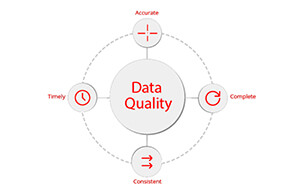Since 1995, FlynetTM has been a leading provider of terminal emulation and host system integration software and services. Following Flynet’s CEO, Christian Rule, being recognised as the 2019 CEO of the Year for the United Kingdom we endeavoured to...
Explore In-Depth CEO Insights and Articles
Explore our extensive collection of articles featuring the latest insights, trends, and success stories from top business leaders. Stay informed with expert analysis and in-depth content that covers a wide range of topics in leadership and innovation. Browse now to stay ahead in the business world.

Browse Our Latest Articles
Explore the latest articles, featuring expert insights, groundbreaking innovations, and success stories from visionary business leaders. From leadership strategies to industry trends, our articles deliver the knowledge you need to stay informed and inspired. Dive in and stay ahead in the ever-evolving world of business leadership.
TPT Retirement Solutions is a leading provider of UK workplace pensions, specialising in Defined Benefit (DB) pension schemes. Following TPT Retirement Solutions’ CEO, Mike Ramsey, recently being named CEO of the Year for the United Kingdom, we to...
The healthcare and pharmaceuticals industries have to move quickly to constantly adapt to an environment that has become defined by innovation and evolution. In this ever-changing landscape, RedefineCompliance look to be a tonic, with a goal to ma...
Tom Anderton, Product and Services Manager, TEAM Energy, explains why we put quality data at the heart of our digital energy management solutions, and so should you.
Seajets, one of the largest fleets in the Med reveals its social responsibility identity with a humanitarian award for its CEO, Marios Iliopoulos
Why have a dog and bark yourself? You might have heard of this expression – and it’s certainly true. The trick is to find the balance between delegating effectively and becoming Teflon-coated and not doing any of the work yourself.
3 things powerful immigrant professionals have in common that can propel any aspiring workplace ‘outsider’
Hosting a marathon, or large running event, boosts sales in a city by over a fifth (21%), according to the latest research from Paymentsense. The merchant service provider analysed data for all major UK 2018 road races against sales volumes for it...
By Mike Malone, Vistage Chair, former Chief Executive Officer of Gryphon Software Corporation and a former US Marine Corp
MP Chi Onwurah - Labour's Industrial Strategy Minister – visited local business, Samuel Knight International, last week to discuss the firm’s growth plans and further investment in Newcastle and its people.
Sherpa Marketing are pleased to welcome a new Account Director to our Client Services Team. Jane Corbett joins the specialist technology focused ABM and Channel Marketing Agency from HH Global, where she was the Group Account Director, managing ac...
There is no doubt that anyone listening to a presentation will learn more from it if they have enjoyed themselves – and the introduction of humour can really help achieve this. If you’re worried that you’re not a natural comedian – don’t fret, t...












